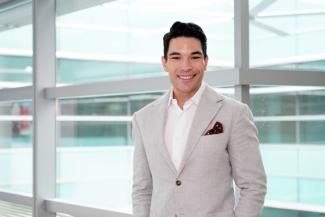
In his studies on discrimination and diversity, SMU Associate Professor Marko Pitesa is motivated by a concern for vulnerable and disadvantaged workers.
By Rebecca Tan
SMU Office of Research & Tech Transfer – Whether you are applying for the position of CEO or running for political office, being physically attractive has its advantages. Good-looking people tend to be perceived as more competent, likeable and trustworthy, and benefit from these unconscious biases over the course of their careers.
But being attractive is not always an asset, particularly if you widen your analysis to beyond the most prestigious roles, says Associate Professor Marko Pitesa of the Singapore Management University (SMU) Lee Kong Chian School of Business. In a study published in the Journal of Personality and Social Psychology, he found that in the case of less desirable jobs, being good looking is not only of no advantage but can even lead to discrimination.
“We expected discrimination in favour of attractive people to be reduced in the domain of less attractive jobs, but the fact that we saw a full reversal to discrimination against attractive people was initially surprising even to us,” Professor Pitesa says.
The burden of being beautiful
In the study, Professor Pitesa and his team used both internally validated experimental methods and field studies to assess how attractiveness affected hiring decisions for less desirable jobs – menial positions that may be dull, pay poorly or are linked to social stigma but nonetheless need to be done; garbage collectors or toilet cleaners for example.
They found that the more desirable the job, the more hiring managers tended to favour attractive people, a finding in line with previous research. However, once desirability dropped below a certain level, hiring managers would instead start discriminating against attractive people. Interestingly, attractiveness was discriminated against even though attractive people were thought to be more competent.
One possible explanation is that attractive people are perceived to be less satisfied with undesirable jobs. “As this inference grows stronger, so does the discrimination against attractive people,” Professor Pitesa explains.
“We found that hiring managers exhibited a stronger tendency to discriminate against attractive people as the work becomes less desirable, with the positive discrimination seen in highly desirable jobs reversing somewhere below the midpoint of the desirability scale.”
In one of four studies Professor Pitesa conducted, participants were asked to decide which of two employees – one less attractive and the other more attractive – had complained about a particular role. The vast majority, Professor Pitesa says, thought the attractive person would be the one complaining – but only if the role was an undesirable one.
“Together, these pieces of evidence show that there is a true bias on the part of the managers thinking that attractive people would feel entitled to better outcomes in relatively less desirable jobs, and because of that, would be worse workers. This perception overshadows other reasons why attractive people are normally favoured,” he explains.
A deeper look at discrimination
“Our research adds precision to our understanding of when and why discrimination occurs,” Professor Pitesa says, adding that he hopes this study will not only help managers and organisations in their efforts to regulate discrimination but also shed light on society’s most vulnerable and disadvantaged workers.
Focusing on the most desirable positions when studying attraction-related discrimination has led researchers to overlook the discrimination faced by the lower rungs of society, Professor Pitesa says. Similarly, studies on discrimination against personal characteristics such as socioeconomic status, race and age tend to focus on the impact of discrimination on positive outcomes such as promotion.
Though such studies are important, they tend to neglect the perspectives of ordinary people who are not vying to be president or CEO but are just trying to make ends meet, he continues. “We want to understand how to ensure fairness and equality of opportunity in that domain of the labour market and not just the very limited slice of society at the very top,” Professor Pitesa says.
Reaping the diversity dividend
Another group of relatively disadvantaged people that Professor Pitesa studies are those working in sales or product promotion. Though managers in sales positions may be well compensated, many millions of people are engaged in sales or customer service in low-level jobs, he says.
For these sales staff, being obliged to be overly positive about the products that they are promoting can erode their view of themselves and cause them to see others as less trustworthy as a result. These findings by Professor Pitesa have recently been published in Organization Science.
“Having many people working in single-dimensional promotion activities has an indirect negative effect on the economy as a whole because you are infusing a lot of mistrust in the economy and arguably slowing down economic activity more generally,” he explains.
Bearing in mind the psychological cost to their employees and the larger economic costs of lowered trust in society, companies should consider scaling back on unnecessarily aggressive sales tactics and paying salespeople more to compensate for the adverse effects of the job, Professor Pitesa says.
Building inclusive workplaces that make such provisions for the disadvantaged might be challenging for managers, but promoting diversity will reap its own dividends, Professor Pitesa thinks.
“There’s a tremendous value and opportunity in creating inclusive environments for people from all backgrounds and social groups. If you can do that, then you will not be limited to the incumbent homogenous high-status groups, but all of a sudden have access to many more hugely talented people,” he says.
“The key to unlocking that potential and generating everything from better ideas to more innovative organisations is learning how to manage diverse environments and diverse employees.”
Back to Research@SMU Issue 58
Image credit: Cyril Ng